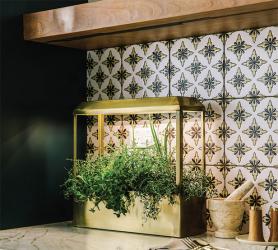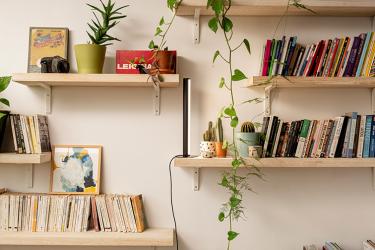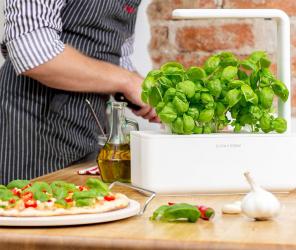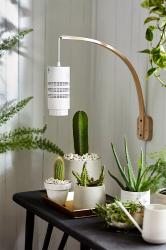What is a grow light? Grow lights are essentially lights that mimic or replicate the light spectrum of the sun or provide a different light spectrum made specifically for certain plants. They come in many sizes, intensities and spectrums, so choosing the right light for your plants’ needs is more complicated than just a simple online buy.
Grow Lights for Low Lights Your well-loved house plants will thrive under grow lights year round, but especially in the winter when the intensity and amount of sunlight they’ll receive is diminished. This is common in homes with fewer opportunities for natural light or in apartments with few windows. If you find your indoor plants aren’t thriving because they lack ample natural light, placing the correct grow light next to it should help keep the plant healthy. Examples of indoor plants that do well with grow lights are the ZZ plant, snake plant, pothos, philodendrons and peperomias.
Red Light, Blue Light “One light fits all” just isn’t the case when it comes to growing plants indoors. Flowering and fruit-producing plants require more red light waves to increase blooming. To promote stem and leaf development, opt for a grow light emitting more blue light waves; blue light waves promote the production of chlorophyll, resulting in stronger, healthier leaves and stems.
Placing with Purpose Where and how you place your grow light is important. For the best results, place your grow light between 12 and 30 inches directly above your desired plant to mimic sunlight in the wild; when your plant starts to grow taller, it’s important to move the grow light with the growth. If the light gets too close to the plant, it could give the plant too much light and kill it. If you have plants that face a window with ample sunlight, you can also place a plant light behind them to reduce the need for regular turning.
To Use or Not to Use? It’s important to learn about what each of your plants needs before buying a grow light; not all plants need light 24/7, and some plants even require dark time. One example of this is cacti and succulents as they can develop dark spots from grow light overuse. Other examples are flowering plants and propagations, which both need darkness to properly flourish. If you notice other examples of stress in your plants such as dry soil, yellow or browning leaves or a change in pigmentation, decreasing grow light usage is paramount.
Types of Bulbs
Incandescent bulbs are the cheapest option. You can use them on a few plants or in addition to natural light in a sunny room. However, their heat and intensity require them to be at least two feet away from plants to prevent scorching. Use these with caution.
Fluorescent lights are the most popular choice for those venturing into grow light usage, as they now come in a wider light spectrum and remain cost effective. Many fluorescent bulbs lack the light range for flowering plants and should only be used for vegetative growth. They don’t get as hot as incandescent bulbs, so they are safer to use.
High Intensity Discharge are amazing choices for grow lights, but they tend to be more expensive to purchase and operate because of their high energy efficiency and high light discharge. Use both red to orange and blue light varieties in tandem to get sturdy, flowering plants.
LED (light emitting diode) lights are relatively new and are very popular. The emit less heat than other options, making them very safe for plants, and they come in a wide range of light spectrums. They can still be expensive for high-end models, but as new technology develops they become more affordable every year.











